- for reservations at least a week before sailing from Lombok to Komodo boat 4 days 3 nights
- Temporarily traveling to Komodo Island from Lombok by cruise boat, waiting for weather conditions and local government
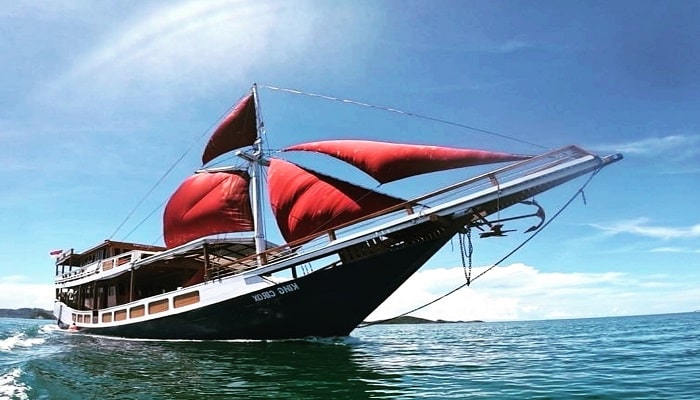
The Indonesian archipelago, a nation of over 17,000 islands, has lived and breathed by the sea for millennia. Its history is written not on parchment, but on the waves, charted by vessels that have connected its disparate lands and cultures. Among these, the Phinisi boat stands as a supreme cultural icon a majestic wooden sailboat whose silhouette is synonymous with adventure, tradition, and the timeless call of the ocean. Far more than a mere vessel, the Phinisi is a floating chronicle of the Bugis and Makassarese people of South Sulawesi, a testament to their unparalleled shipbuilding genius and intrepid spirit.
Today, this centuries-old legacy powers one of the world’s most spectacular marine tourism experiences: the Komodo tours that depart from hubs like Bali, Lombok, and Labuan Bajo. Whether you are embarking on a swift Komodo tour 1 day full trip, a comprehensive multi-day journey like the Komodo tour 3 days 2 nights or Komodo tour 4D3N, or indulging in a Komodo luxury boat trip, you are participating in a modern chapter of an ancient maritime saga. The Phinisi is the indispensable backbone of these adventures, proving that a rich cultural tradition can not only survive but thrive by adapting to the modern world without sacrificing its soul.
Origins of the Phinisi: Forged by the Sea and Spirit of the Bugis
The story of the Phinisi begins not in a sterile shipyard, but in the vibrant, salt-kissed coastal villages of South Sulawesi Tanah Beru, Ara, and Bira. Here, the Bugis and Makassarese, born navigators and feared pirates, honed their craft over generations. Their need was born of necessity and ambition: to master the treacherous currents, unpredictable squalls, and vast distances of the Indonesian seas.
A Design Sculpted by Necessity
The seafarers required a vessel that was both incredibly strong and remarkably agile. The answer was the Phinisi. Its design is a masterclass in functional elegance:
- The Distinctive Rig: While often called a “schooner,” the Phinisi’s rigging is technically a unique combination, often referred to as a “pinisi rig,” featuring two towering masts and a configuration of seven sails. This number is deeply symbolic, often said to represent the seven original Bugis kingdoms, weaving their political history into the very fabric of the ship.
- The Hull Form: The hull itself is a work of art, characterized by a sharp, forward-leaning bow (the ‘sombala bakka’) designed to cut through powerful waves, and a broad, rounded stern that provides exceptional stability and ample cargo space.
- The Wood and the Craft: Master carpenters, known as ‘sawi’, selected only the finest hardwoods legendary ironwood (kayu besi) and resilient teak (kayu jati) known for their resistance to rot, marine borers, and the relentless tropical sun. Using only adzes, hand drills, and hammers, they shaped each component with an instinctive precision honed over a lifetime. The construction process itself is unique; unlike Western methods, the Phinisi hull is built plank-first around a temporary frame, a technique requiring profound skill and an almost spiritual understanding of the wood’s properties.
This knowledge was a sacred inheritance, passed from father to son not through blueprints, but through lived experience. A boy would learn by watching his elders select a tree, judging its grain and strength, and then guiding the community in the rhythmic, coordinated effort of bringing the vessel to life. It was, and remains, a communal rite of passage.
The Rise of an Archipelagic Empire: Phinisi and the Sulawesi Maritime Network
As the Phinisi design reached its zenith, so did the ambition of its sailors. By the 17th and 18th centuries, these vessels became the undisputed masters of the “Maritime Silk Road” within the archipelago. They were the semi-trucks of their era, forging a sprawling network that connected the spice-rich Moluccas with the rice bowls of Java, the textile centers of Sumatra, and the remote outposts of the Lesser Sunda Islands.
Their holds carried the lifeblood of inter-island commerce: fragrant nutmeg and cloves, sacks of rice and salt, finely woven textiles, and precious Chinese ceramics. This network was the internet of its day, a vital web of exchange that sustained isolated communities long before the existence of modern infrastructure. The sailors of Sulawesi were renowned as the most skilled and courageous navigators, their reputation built on an encyclopedic knowledge of the stars, seasonal wind patterns (the Musim), and complex ocean currents.
Charting the Course for Modern Tourism
This historical trade route is the very same highway used by today’s Komodo sailing trip Indonesia. When you embark on a Komodo tour from Lombok or connect via a Komodo tour from Bali, your vessel is retracing the deep-sea paths once sailed by laden Phinisi fleets. The destinations the islands surrounding Komodo Village and the dramatic straits of Komodo National Park were not discovered for tourism; they were known stops for fresh water, shelter, and trade for these ancient mariners. The modern journey, with its GPS and powerful engines, is a direct continuation of this centuries-old tradition of exploration.
The Liveaboard Revolution: Phinisi’s Evolution into Tourism
The late 20th century saw a pivotal shift. As Indonesia opened its doors to the world, the breathtaking beauty of Komodo National Park with its prehistoric Komodo dragons, ethereal Pink Beach, swirling manta rays, and savannah-topped islands captured the global imagination. A new type of vessel was needed: one capable of navigating remote park waters safely while offering comfort and immersion in this pristine environment. The Phinisi was the perfect candidate for this “liveaboard revolution.”
Its inherent design features made it uniquely suited for this new role:
- Stability and Space: The broad, stable wooden hull provided an ideal platform for constructing multiple guest cabins, spacious sun decks, dining areas, and even ensuite bathrooms transforming it from a cargo hauler into a floating hotel.
- Shallow Draft: Unlike deep-hulled steel ships, the Phinisi can glide into protected bays, lagoons, and anchor close to shore, granting guests immediate access to snorkeling spots and beaches.
- Aesthetic and Ambiance: The timeless beauty of the wooden craft, with its soaring masts and ropes, provides an authentic, romantic, and deeply photogenic experience that is perfectly aligned with the raw nature of the park. It offers “slow travel,” where the journey itself is as important as the destination.
This evolution created the entire spectrum of modern Komodo tour packages. The extended expeditions like the Komodo tour 3 days 2 nights or the more comprehensive Komodo tour 4D3N are only possible because the Phinisi serves as a comfortable base camp. At the pinnacle of this experience is the Komodo luxury boat trip, where the traditional hull conceals a five-star interior featuring air-conditioned suites with king-sized beds, private balconies, gourmet chefs, and dedicated spa therapists.
UNESCO and the Soul of the Craft: A Symbol of Cultural Resilience
In 2017, the world formally acknowledged the profound cultural significance of the Phinisi. UNESCO inscribed the “Art of Boatbuilding in South Sulawesi” on its Representative List of the Intangible Cultural Heritage of Humanity. This was not an award for the boat as an object, but for the knowledge, rituals, and social practices that bring it to life.
The Sacred Rituals of Construction
A Phinisi’s birth is a spiritual journey. In the villages of Bira and Tanah Beru, the ancient rituals are meticulously observed:
- The Keel Laying Ceremony: The process begins with a prayer and an offering to ensure the blessing of the ancestors and the sea spirits.
- Instinctual Measurement: The sawi still work without detailed plans, using their eyes, hands, and inherited knowledge to determine every angle and curve.
- The Launch: The most dramatic moment is the launch. The massive, engine-less hull is pushed towards the sea on wooden skids by dozens of community members. As it slides into the water for the first time, a great celebration erupts a mix of relief, pride, and prayer for the safety of all who will ever sail on it.
This UNESCO recognition protects a living culture. When a traveler steps onto a Phinisi for a Komodo sailing trip Indonesia, they are not just boarding a boat; they are boarding a piece of living, breathing cultural heritage.
The Phinisi and the Local Ecosystem: A Symbiotic Relationship
The operation of the Phinisi within Komodo National Park is deeply intertwined with the local ecosystem and communities. The boat does not simply pass through this environment; it is part of it.
The fishing families living near Komodo dragon island in Indonesia possess an intimate, generational knowledge of the local waters. They understand the tricky tides around Manta Point, the seasonal winds at Gili Lawa, and the safest anchorages during a sudden squall. This knowledge is invaluable, and many of these local men find employment as deckhands, guides, and captains on the Phinisi boats. A Komodo tour from Labuan Bajo is often enriched by a guide who can not only spot a dragon but also explain the local fishing traditions or point out a seabird unique to the region.
Furthermore, the Phinisi economy creates a powerful incentive for conservation. By providing sustainable livelihoods through tourism, it offers local communities an alternative to overfishing or practices that could damage the fragile ecosystem. The revenue generated supports park fees and local conservation efforts, ensuring that the wonder of the Komodo dragon island in Indonesia is preserved for generations to come.
The Phinisi in the Modern Economy: A Pillar of Eastern Indonesian Tourism
Today, the Phinisi is the economic engine of marine tourism in Eastern Indonesia. The entire Lombok Komodo tour industry, for instance, is built around these vessels. This demand creates a virtuous cycle of employment and investment:
- Shipbuilding Revival: The shipwrights in South Sulawesi enjoy a steady stream of orders, ensuring the survival of their craft.
- Local Employment: From the crews hailing from Sumbawa and Flores to the tour coordinators in Labuan Bajo and the fresh food suppliers stocking the galleys, thousands of families depend on the Phinisi fleet.
- Infrastructure Development: The influx of tourists has spurred the development of ports, airports (like Labuan Bajo’s), and local businesses.
Travelers consciously choose a Phinisi over a generic fibreglass speedboat because it offers a deeper, more meaningful connection to Indonesia. It represents a choice for authenticity, for “slow travel,” and for a tangible link to the nation’s seafaring soul.
How the Phinisi Defines the Komodo Tour Experience
The Phinisi is not just a mode of transport; it is the central character in the Komodo adventure, fundamentally shaping the traveler’s experience.
- Atmosphere of Timelessness: The creak of the teak deck, the sight of the sails against a setting sun, the gentle rocking of the wooden hull these sensory details create an atmosphere utterly distinct from the sterile feel of a modern motor yacht. It fosters a sense of connection to the natural world and to history.
- Tailored Itineraries: The vessel’s capabilities directly enable the variety of Komodo tour packages available. The success of a Komodo tour 2D1N or a Komodo tour 4D3N hinges on the Phinisi’s ability to serve as a comfortable, mobile base, allowing guests to wake up at a new, breathtaking location each morning.
- Intimate Access: Its maneuverability allows it to reach the most pristine spots early in the morning or late in the afternoon, avoiding the crowds that day-trippers on speedboats encounter.
Even the popular Komodo tour 1 day full trip, typically operated by speedboat, relies on the navigational knowledge and established routes perfected over centuries by Phinisi sailors.
The Spirit of the Sea: A Living Legacy
The Phinisi boat is a miracle of cultural resilience. It survived the age of steam, the era of steel, and the forces of globalization, not by resisting change, but by embracing a new purpose. It carries within its timber the indomitable spirit of Indonesian exploration a spirit that recognized no horizon as a limit.
When you join one of the many komodo tours, you are stepping into this unbroken lineage. You are crossing the same waters as the ancient spice traders. You are following the stars as the Bugis navigators did. You are witnessing the same magnificent landscapes and encountering the primordial Komodo dragons on their home island. You are, for a short while, part of the enduring story of Indonesia’s relationship with the sea.
Conclusion
The history of the Phinisi is a mirror reflecting the strength, creativity, and resilience of the Indonesian people. It began as a humble yet mighty workboat, the engine of a sprawling archipelagic economy. It evolved into a national symbol, recognized by the world for its profound cultural heritage. Today, it has found a new calling as the gracious host for one of the planet’s most awe-inspiring adventures, bringing travelers from around the globe to the heart of Komodo National Park on journeys ranging from a quick Komodo tour 2D1N to an opulent Komodo luxury boat trip.
In every hand-carved joint, in every rope of its rigging, and in the wake it leaves on the turquoise waters of the Flores Sea, the Phinisi carries the dreams of its Bugis builders, the livelihoods of local communities, and the wonder of every traveler who sails upon it. It is more than a boat; it is a vital, living bridge between generations, between cultures, and between the epic history and the stunning future of Eastern Indonesia.
Read also Whale Sharks Point in Sumbawa : Start from Poto Tano Harbour
Maybe you are interested in reading the following article:
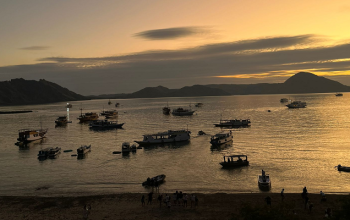
How To Get’s Komodo Island from Bali
How to reach komodo island from bali Usually, there are four ways to get to Komodo Island Those are some information and tips on how to reach Komodo Island from Bali. Other article you must know about: Where is Labuan Bajo? Your Complete Travel Guide read more
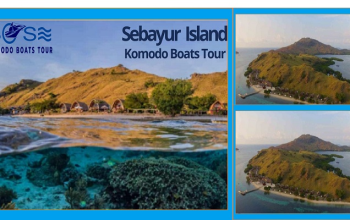
Sebayur Island Travel Guide: Beauty and Diving in Komodo
When talking about Labuan Bajo, the first thing that comes to mind is Komodo National Park with its iconic Komodo dragons. However, nearby Labuan Bajo is also dotted with various exotic islands that are no less impressive, one of which is Sebayur Island! This island can be considered Labuan Bajo’s hidden gem, as its pristine... read more
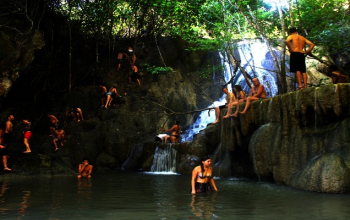
Komodo Island Tour Package Hidden Paradise of Moyo Island
Sailing east from Lombok toward Komodo National Park, travelers often discover one of Indonesia’s most enchanting islands: Moyo Island. A land where waterfalls meet the ocean and coral reefs glow beneath crystal-clear water, Moyo is a true hidden paradise in the heart of the Indonesian archipelago. Once visited by celebrities like Princess Diana and Mick..... read more
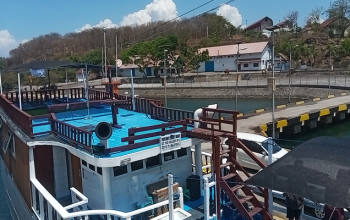
Kayangan of Lombok: Your Eastern Gateway to Sumbawa & Beyond
Discover Kayangan Port in East Lombok Located on the eastern coast of Lombok Island, Kayangan Port (Indonesian: Pelabuhan Kayangan) serves as a vital maritime hub connecting Lombok to Sumbawa Island and other destinations in eastern Indonesia. While less known than Lembar or Bangsal ports, Kayangan plays a crucial role in inter-island travel, logistics, and ... read more
Contact Us
If you have any questions, please contact us.
-
Hotline
62851-8392-9229 -
Whatsapp
085183929229 -
Email
labuanbajobooking@gmail.com

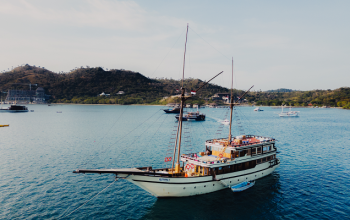
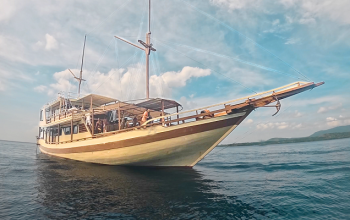

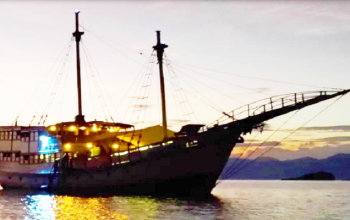

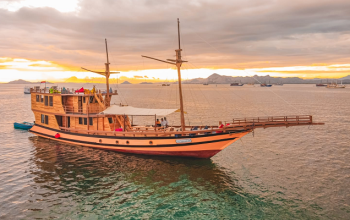

No comment yet